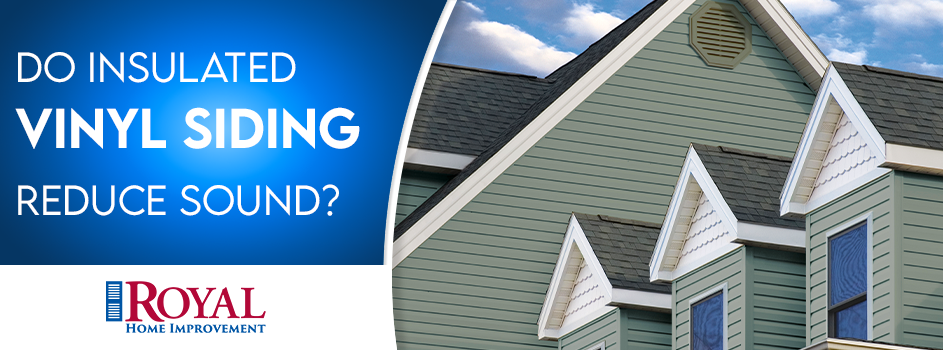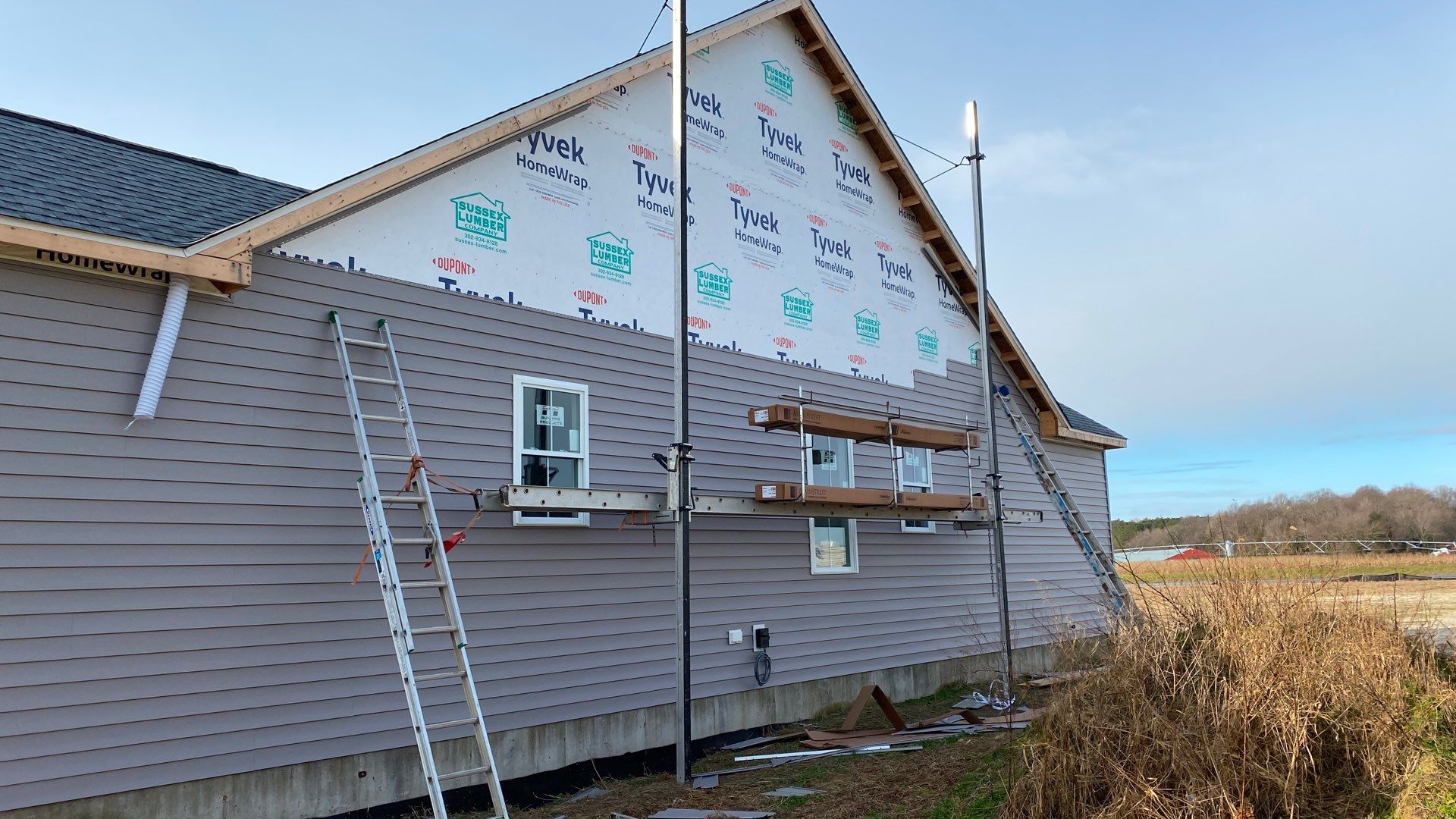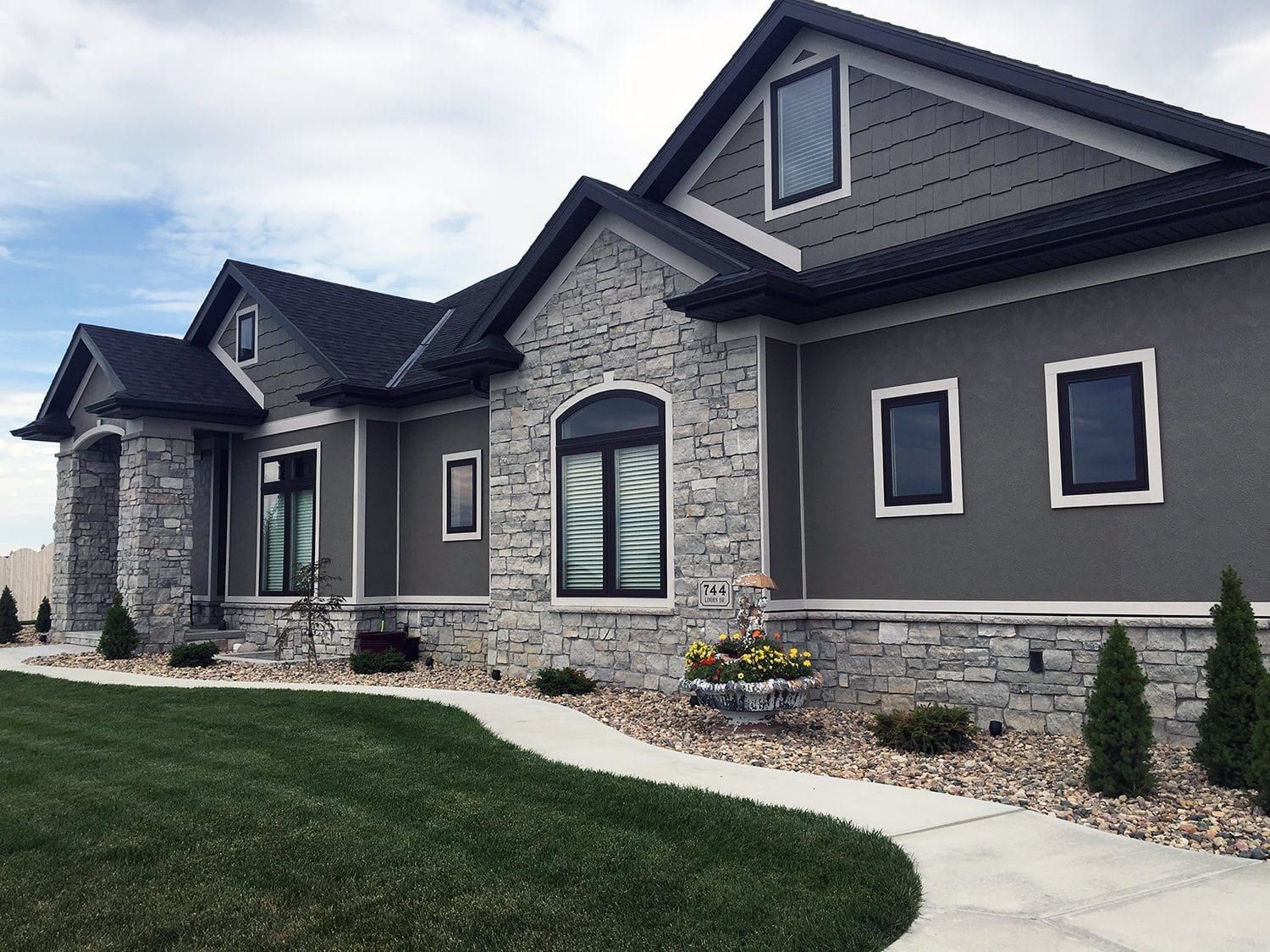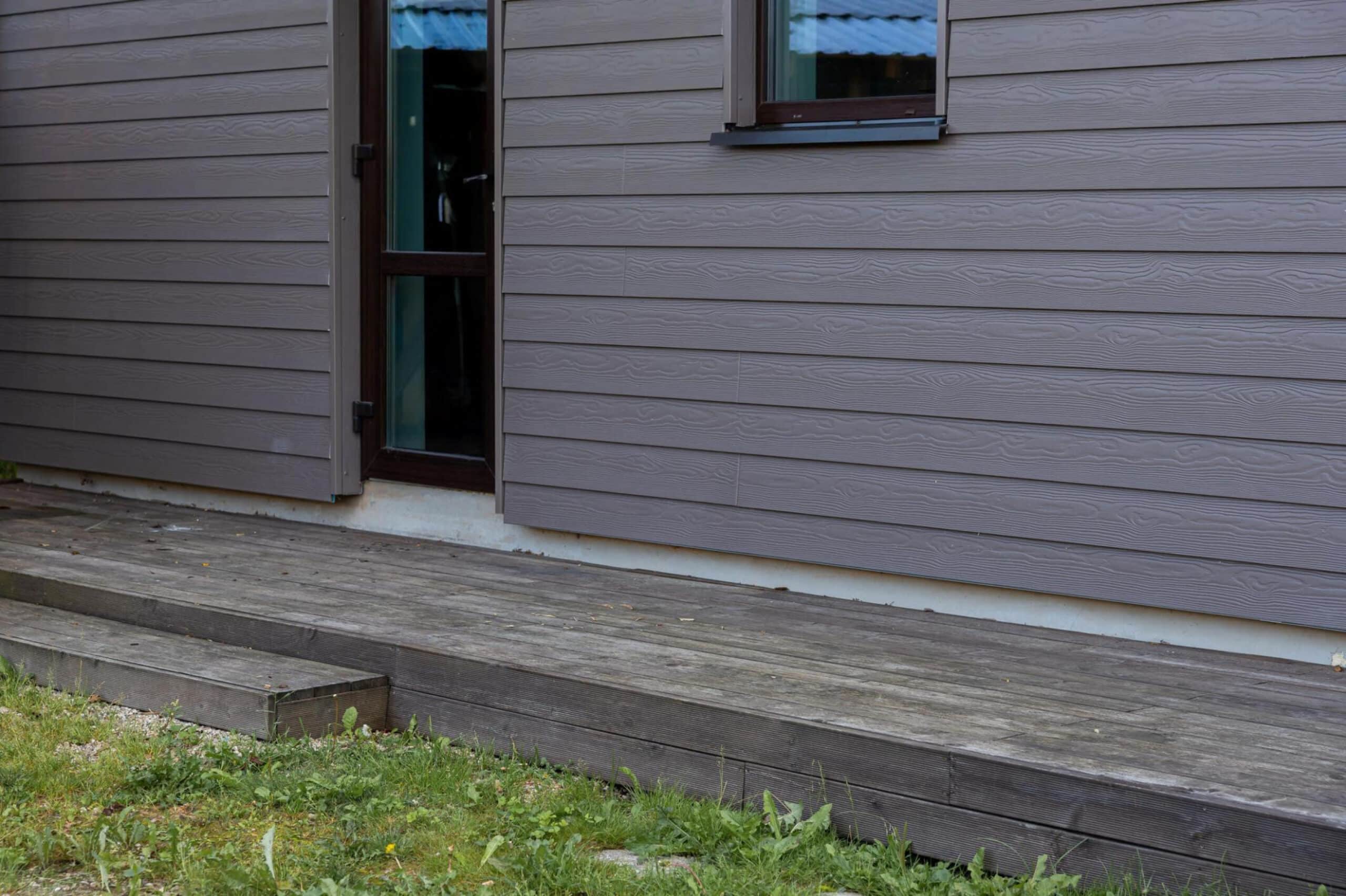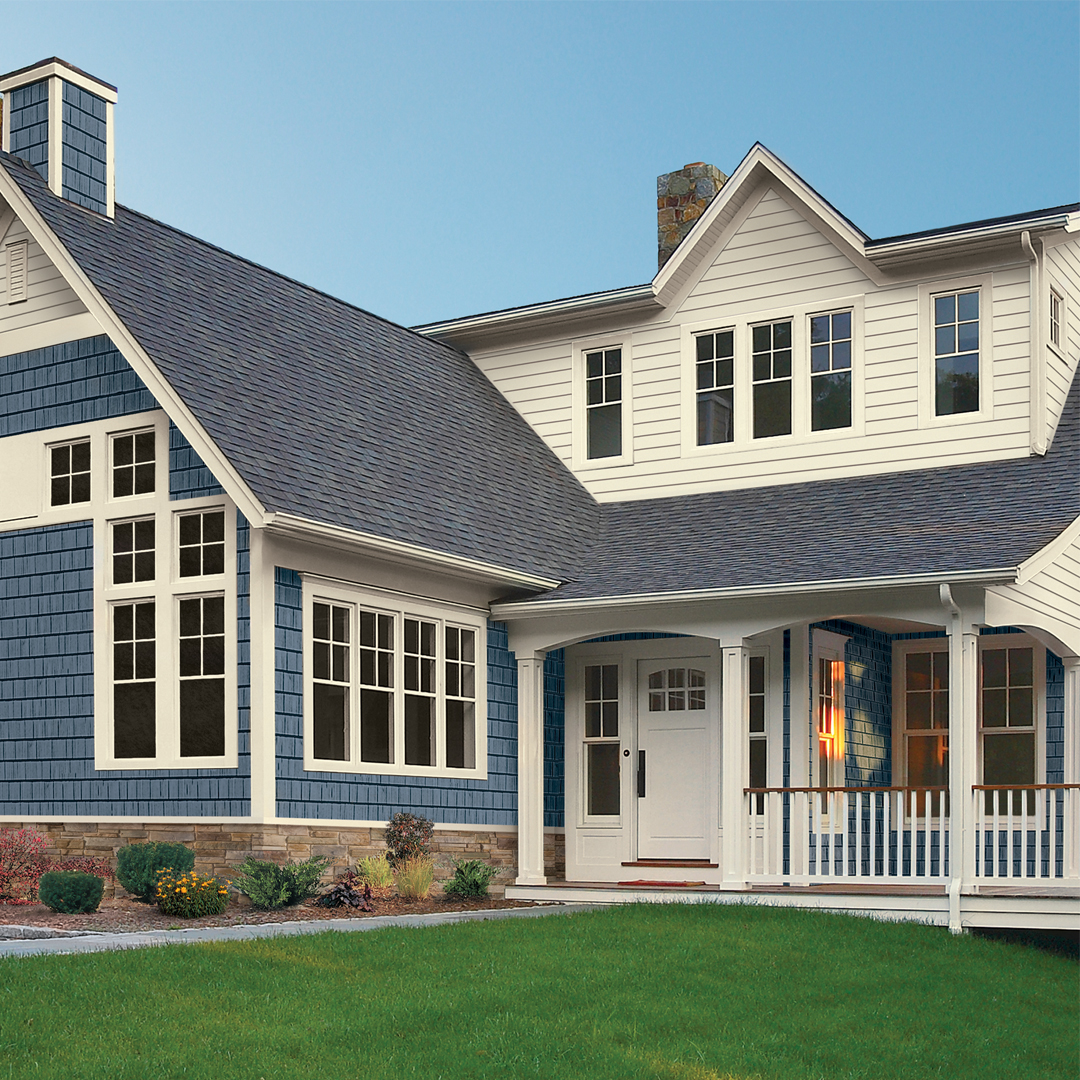Is Insulated Siding Worth It?
Is insulated siding worth it? This question weighs heavily on homeowners considering exterior renovations. The decision hinges on a careful evaluation of upfront costs versus long-term energy savings, durability, aesthetic appeal, and environmental impact. This comprehensive guide will explore each of these factors, helping you make an informed choice for your home.
We’ll delve into a detailed cost analysis, comparing insulated siding to traditional options, and examining potential hidden expenses. You’ll learn about the crucial role of R-value in energy efficiency and how insulated siding contributes to a more comfortable and energy-efficient home. Furthermore, we’ll discuss the lifespan, maintenance needs, and aesthetic versatility of different insulated siding materials, providing you with a complete picture to aid your decision-making process.
Cost Analysis of Insulated Siding
Choosing the right siding for your home involves careful consideration of both upfront and long-term costs. Insulated siding presents a higher initial investment compared to traditional options, but this is often offset by substantial energy savings over the lifespan of the material. Let’s delve into a detailed cost analysis to help you make an informed decision.
Upfront Costs Comparison
The initial expense of insulated siding is significantly higher than that of traditional vinyl, wood, or fiber cement siding. This difference stems from the added layer of insulation integrated into the siding panels themselves. The following table provides a general comparison, keeping in mind that actual costs can vary widely depending on factors such as house size, siding type, labor rates in your region, and material availability. These figures are estimates and should be considered as a starting point for your own research and budgeting.
| Siding Type | Material Cost (per sq ft) | Labor Cost (per sq ft) | Total Cost (per sq ft) |
|---|---|---|---|
| Insulated Vinyl Siding | $3.00 – $6.00 | $2.00 – $4.00 | $5.00 – $10.00 |
| Traditional Vinyl Siding | $1.50 – $3.00 | $1.50 – $3.00 | $3.00 – $6.00 |
| Wood Siding | $4.00 – $8.00 | $3.00 – $6.00 | $7.00 – $14.00 |
| Fiber Cement Siding | $5.00 – $10.00 | $4.00 – $8.00 | $9.00 – $18.00 |
Long-Term Cost Savings Through Energy Efficiency
The primary benefit of insulated siding lies in its energy-saving capabilities. The added insulation layer reduces heat transfer, leading to lower heating and cooling bills. The extent of these savings depends on several factors, including climate, home insulation levels, and heating/cooling system efficiency. However, a significant reduction in energy consumption is expected. For instance, a homeowner in a colder climate with a poorly insulated home might see annual savings of $500-$1000 or more over traditional siding. Over a 10-year period, this translates to potential savings of $5,000 to $10,000 or more. This estimate assumes consistent energy prices and no significant changes in energy usage habits.
Potential Hidden Costs
While the upfront and long-term cost savings are significant factors, it’s crucial to consider potential hidden costs associated with insulated siding installation. These can include:
* Permits: Building permits are often required for exterior renovations, and the cost varies depending on location and the scope of the project.
* Unexpected Repairs: During installation, unforeseen issues such as rotted sheathing or damaged underlying structure might be discovered, necessitating additional repairs and increasing the overall cost.
* Specialized Labor: Installing insulated siding may require specialized tools and expertise, potentially leading to higher labor costs compared to traditional siding installation.
* Material Waste: Accurate measurements are crucial to minimize material waste. Inaccurate measurements can lead to higher material costs.
Energy Efficiency and Insulation Value
Insulated siding offers a significant advantage in improving a home’s energy efficiency by providing an extra layer of insulation directly on the exterior. This directly impacts heating and cooling costs, contributing to both environmental sustainability and financial savings. Understanding the R-value of different materials and how it compares to other insulation methods is crucial in assessing the overall value proposition.
Insulated siding’s effectiveness stems from its ability to impede the transfer of heat. This reduction in heat transfer leads to a more stable indoor temperature, minimizing energy consumption required to maintain comfort.
R-Values of Insulated Siding Materials
The R-value is a measure of a material’s resistance to heat flow. A higher R-value indicates better insulation. Different insulated siding materials offer varying R-values. This variation affects the overall energy efficiency of the siding system.
- Fiber Cement Siding with Foam Insulation: Typically offers an R-value ranging from R-5 to R-8, depending on the thickness of the foam core. This is a popular choice due to its durability and relatively high insulation value.
- Vinyl Siding with Foam Insulation: Usually provides an R-value between R-3 and R-7, again dependent on the foam thickness. Vinyl is known for its affordability, but its R-value is generally lower than fiber cement.
- Polyurethane Foam Siding: This type of siding can boast an R-value ranging from R-6 to R-8 or even higher, depending on the density and thickness of the foam. It offers superior insulation but might be more expensive than other options.
Improved Home Comfort Through Draft Reduction and Temperature Stabilization
Insulated siding significantly reduces drafts by creating an air barrier. This air barrier prevents cold air from entering during winter and hot air from entering during summer, resulting in a more consistent and comfortable indoor temperature. The reduced temperature fluctuations mean less strain on your heating and cooling systems, leading to lower energy bills and increased comfort. For instance, a home with insulated siding might experience a more stable temperature throughout the day, eliminating the need for frequent adjustments to the thermostat. This is particularly beneficial in climates with significant temperature swings.
Comparison with Other Home Insulation Methods
While insulated siding contributes to overall home energy efficiency, it’s important to compare its effectiveness with other common insulation methods.
- Spray Foam Insulation: Spray foam offers excellent insulation values (R-values can reach R-7 per inch or higher), effectively sealing gaps and cracks. However, it’s usually applied to the interior or exterior wall cavities, rather than as a surface covering like siding. Spray foam provides superior insulation compared to most insulated siding options but may be more costly and require professional installation.
- Fiberglass Insulation: Fiberglass batts or rolls are a common and cost-effective insulation choice for wall cavities. They provide good insulation (R-values vary depending on thickness and density), but they don’t address air infiltration as effectively as spray foam or insulated siding. Fiberglass is typically installed during construction or major renovations, unlike insulated siding which can be installed as a retrofit.
Durability and Maintenance
Insulated siding offers a compelling combination of energy efficiency and aesthetic appeal, but its long-term performance hinges significantly on its durability and the associated maintenance requirements. Understanding the lifespan and upkeep needs of different insulated siding materials is crucial for making an informed decision. This section will explore the durability and maintenance aspects of various insulated siding options, comparing them to traditional siding choices.
The lifespan and maintenance needs of insulated siding vary considerably depending on the material used. Factors like climate, installation quality, and homeowner care also play a significant role in determining the longevity of the siding.
Lifespan and Durability of Insulated Siding Materials
Different insulated siding materials exhibit varying degrees of durability and longevity. This directly impacts the long-term cost-effectiveness of the investment. Let’s examine some common types.
Vinyl Insulated Siding: Vinyl siding, often chosen for its affordability, generally boasts a lifespan of 20-30 years. Its durability is influenced by its thickness and quality. Thicker vinyl tends to be more resistant to dents and impacts. However, extreme temperature fluctuations can cause expansion and contraction, potentially leading to warping or cracking over time. Proper installation is crucial to minimize these issues. Exposure to intense UV radiation can also cause fading or discoloration.
Fiber Cement Insulated Siding: Fiber cement siding, a more robust option, offers a considerably longer lifespan, typically ranging from 50 to 80 years. It is highly resistant to fire, moisture, insects, and impacts, making it a durable and low-maintenance choice. While more expensive upfront, its extended lifespan often translates to lower long-term costs. However, fiber cement siding is more susceptible to cracking if not installed properly. Regular cleaning helps to maintain its appearance and prevent the accumulation of dirt and grime which can accelerate deterioration.
Maintenance Needs for Insulated Siding
While insulated siding is designed for low maintenance, regular care is essential to prolong its lifespan and maintain its aesthetic appeal. The specific maintenance requirements will vary based on the siding material and the environmental conditions.
Cleaning: Regular cleaning is crucial for all types of insulated siding. A simple power washing (using low pressure to avoid damage) once or twice a year is often sufficient to remove dirt, debris, and mold. For stubborn stains, mild soap and water can be used. Avoid harsh chemicals, as they can damage the siding’s finish.
Repairs: Minor repairs, such as replacing damaged panels, are relatively straightforward for vinyl siding. However, fiber cement repairs might require professional assistance due to the material’s strength and the need for precise fitting. Prompt attention to any damage helps prevent larger, more costly repairs down the line. Regular inspections are recommended, particularly after severe weather events.
Comparison with Traditional Siding
Compared to traditional siding options like wood or aluminum, insulated siding generally requires less maintenance. Wood siding, for instance, necessitates regular painting or staining to protect it from the elements and prevent rot. Aluminum siding, while durable, can be prone to dents and scratches. Insulated siding, particularly fiber cement, significantly reduces the frequency and extent of maintenance needed, resulting in long-term cost savings.
Aesthetic Considerations and Design Options
Insulated siding offers a compelling blend of functionality and aesthetics, providing homeowners with a wide array of choices to enhance their home’s exterior. The variety in styles, colors, and textures allows for seamless integration with various architectural styles and personal preferences, ultimately boosting curb appeal and property value.
Insulated siding comes in a diverse range of styles and colors, mirroring the options available in traditional siding materials. This allows homeowners to maintain a consistent aesthetic or to create a striking contrast depending on their design goals. The ability to customize the look of the home to reflect individual tastes is a significant advantage.
Siding Styles and Descriptions
The following table illustrates some common insulated siding styles and their characteristics. Choosing the right style depends on the architectural style of the home and the homeowner’s personal preferences.
| Siding Style | Description |
|---|---|
| Shake/Shingle | Mimics the look of natural wood shakes or shingles, offering a rustic and charming appearance. Often features varied lengths and textures for a more natural look. |
| Board and Batten | Features wide vertical boards with narrower strips (battens) covering the seams, creating a clean, linear look. This style is often associated with farmhouse or traditional designs. |
| Lap Siding | Overlapping horizontal boards create a classic and timeless look. This is a versatile style suitable for various architectural styles. |
| Panel Siding | Large panels provide a sleek and modern appearance. This style is often used in contemporary or minimalist homes. |
Curb Appeal Enhancement
Insulated siding significantly enhances a home’s curb appeal. The clean lines and consistent finish provided by insulated siding eliminate the visual clutter often associated with older, weathered siding. The wide variety of colors and styles allows for customization to perfectly complement the home’s landscaping and architectural features. A fresh coat of siding can revitalize a home’s exterior, making it more visually appealing and increasing its market value. For instance, a home with outdated, faded vinyl siding can be dramatically improved with a new installation of insulated siding in a more contemporary color scheme, instantly increasing its curb appeal and attractiveness to potential buyers.
Integration with Architectural Styles
Insulated siding is remarkably versatile and can be successfully integrated with various architectural styles. For example, a craftsman-style home might benefit from the rustic charm of shake or shingle-style insulated siding. A contemporary home might look best with sleek panel siding. Traditional homes can benefit from the classic look of lap siding. The key to successful integration lies in selecting the right style, color, and texture to complement the existing architectural features and create a cohesive overall aesthetic. Careful consideration of the surrounding landscape and neighborhood architecture will ensure the home’s updated siding enhances rather than clashes with its environment.
Installation Process and Considerations
Insulated siding installation is a more complex process than traditional siding, requiring specialized skills and tools. Proper installation is crucial for achieving the promised energy efficiency and longevity of the product. A poorly installed system can lead to air leaks, moisture problems, and aesthetic flaws, negating the benefits of choosing insulated siding in the first place.
The installation process typically involves several key steps, each requiring precision and attention to detail. Failing to follow these steps correctly can compromise the integrity and performance of the insulated siding system.
Typical Installation Steps
The following steps outline a typical insulated siding installation. Variations may exist depending on the specific siding product and the complexity of the house’s exterior.
- Preparation: This crucial first step involves thoroughly inspecting the existing wall surface, removing any damaged or deteriorated siding or sheathing. Any necessary repairs to the underlying structure must be completed before siding installation begins. This might include replacing rotted wood or addressing water damage.
- Framing and Sheathing: If necessary, new framing or sheathing may need to be installed to provide a smooth and even surface for the insulated siding. This step ensures a consistent and aesthetically pleasing final product. Proper flashing is also installed to prevent water intrusion.
- Installation of the Insulated Siding Panels: The insulated siding panels are then installed, typically starting from the bottom and working upwards. Each panel is carefully fitted and secured using appropriate fasteners, ensuring proper alignment and overlap to prevent water penetration. Special attention should be paid to corners, windows, and doors.
- Trim and Finishing: Once the main siding panels are in place, trim pieces are installed to cover exposed edges and create a neat and finished look. This step often involves cutting and fitting trim pieces around windows, doors, and other architectural features.
- Final Inspection: A thorough inspection is conducted to ensure that all panels are securely fastened, properly aligned, and free from defects. This final check helps identify and correct any minor issues before the project is considered complete.
Potential Installation Challenges
Several challenges can arise during insulated siding installation. Understanding these potential problems allows homeowners to better prepare and manage expectations.
- Uneven Wall Surfaces: Existing walls may not be perfectly straight or level, requiring extra work to create a smooth surface for the siding panels. This may involve additional framing or shimming to ensure proper installation.
- Complex Architectural Features: Houses with intricate designs, such as dormers, bay windows, or multiple levels, require more precise cutting and fitting of the siding panels, potentially increasing installation time and complexity.
- Weather Conditions: Extreme temperatures or inclement weather can significantly impact the installation process. High winds, heavy rain, or extreme cold can slow down work and potentially damage the siding material.
- Improper Fastening: Using incorrect fasteners or failing to properly secure the panels can lead to loose siding, air leaks, and water penetration, compromising the entire system.
Importance of Hiring a Qualified Installer
Hiring a qualified and experienced installer is paramount for a successful insulated siding installation. A professional installer possesses the necessary skills, tools, and knowledge to overcome potential challenges and ensure a high-quality installation.
Choosing an unqualified installer can lead to costly mistakes, including improper installation, damage to the siding, and voiding of any warranties. A reputable installer will provide detailed estimates, offer warranties on their work, and use high-quality materials, ensuring a long-lasting and efficient siding system.
Environmental Impact
Insulated siding presents a complex environmental picture, with both benefits and drawbacks that must be carefully considered. While it offers significant energy savings, leading to reduced carbon emissions, the manufacturing process and material composition contribute to the overall environmental footprint. A thorough evaluation is necessary to understand the complete lifecycle impact of this building material.
The environmental impact of insulated siding hinges on several factors, including the specific materials used, manufacturing processes, transportation distances, and the eventual disposal or recycling methods employed. A balanced assessment necessitates consideration of both the positive and negative aspects throughout the product’s lifecycle.
Comparison of Environmental Impacts
The environmental impact of insulated siding varies considerably depending on the core material used (e.g., foam insulation) and the facing material (e.g., vinyl, fiber cement, or wood). Comparing it to traditional siding materials requires a holistic view encompassing manufacturing, transportation, installation, and end-of-life management. For example, vinyl siding, while relatively inexpensive and easy to install, is derived from petroleum and is not readily biodegradable. Wood siding, although a renewable resource, often requires significant treatment with chemicals to protect against rot and insects. Fiber cement siding, while more durable and sustainable than vinyl, has a higher embodied carbon footprint due to its manufacturing process. Insulated siding, when utilizing recycled materials in its construction, may offer an advantage in certain cases, depending on the specific composition and manufacturing methods. Life cycle assessments (LCAs) can provide a more detailed and quantitative comparison.
Recyclability and Sustainability of Insulated Siding Materials
Recyclability and sustainability differ significantly across various insulated siding materials. Some manufacturers are now incorporating recycled content into their products, increasing the sustainability of their manufacturing processes. However, the degree of recyclability at the end of the siding’s lifespan varies greatly. For instance, vinyl siding, while often recyclable, is not widely recycled due to limited infrastructure and economic viability. Many communities lack programs to recycle vinyl siding, leading to landfill disposal. Fiber cement siding is more difficult to recycle due to its composite nature, often ending up in landfills. Metal-clad insulated siding, while potentially recyclable, requires specialized facilities and processes. Wood siding, while theoretically recyclable or reusable, frequently ends up in landfills due to its deterioration and treatment with chemicals. The sustainability of insulated siding depends heavily on the specific materials used and the availability of effective recycling programs.
Pros and Cons of Insulated Siding from an Environmental Perspective
It’s crucial to weigh the environmental advantages and disadvantages of insulated siding. The following points highlight key aspects:
- Pros:
- Reduced energy consumption and greenhouse gas emissions due to improved insulation.
- Potential for incorporating recycled materials in manufacturing.
- Increased durability, potentially extending the lifespan and reducing the frequency of replacement.
- Cons:
- High embodied energy in manufacturing, particularly for certain core materials (e.g., some foams).
- Limited recyclability for some materials, leading to landfill disposal.
- Potential release of harmful chemicals during manufacturing or disposal (depending on the materials used).
- Transportation impacts associated with sourcing and delivery of materials.
Conclusion
Ultimately, the question of whether insulated siding is “worth it” is highly individual. While the upfront investment is greater than traditional siding, the long-term energy savings, enhanced home comfort, and potential increase in property value can make it a worthwhile investment for many homeowners. By carefully considering the factors discussed—cost, energy efficiency, durability, aesthetics, and environmental impact—you can confidently determine if insulated siding is the right choice for your specific needs and circumstances.
